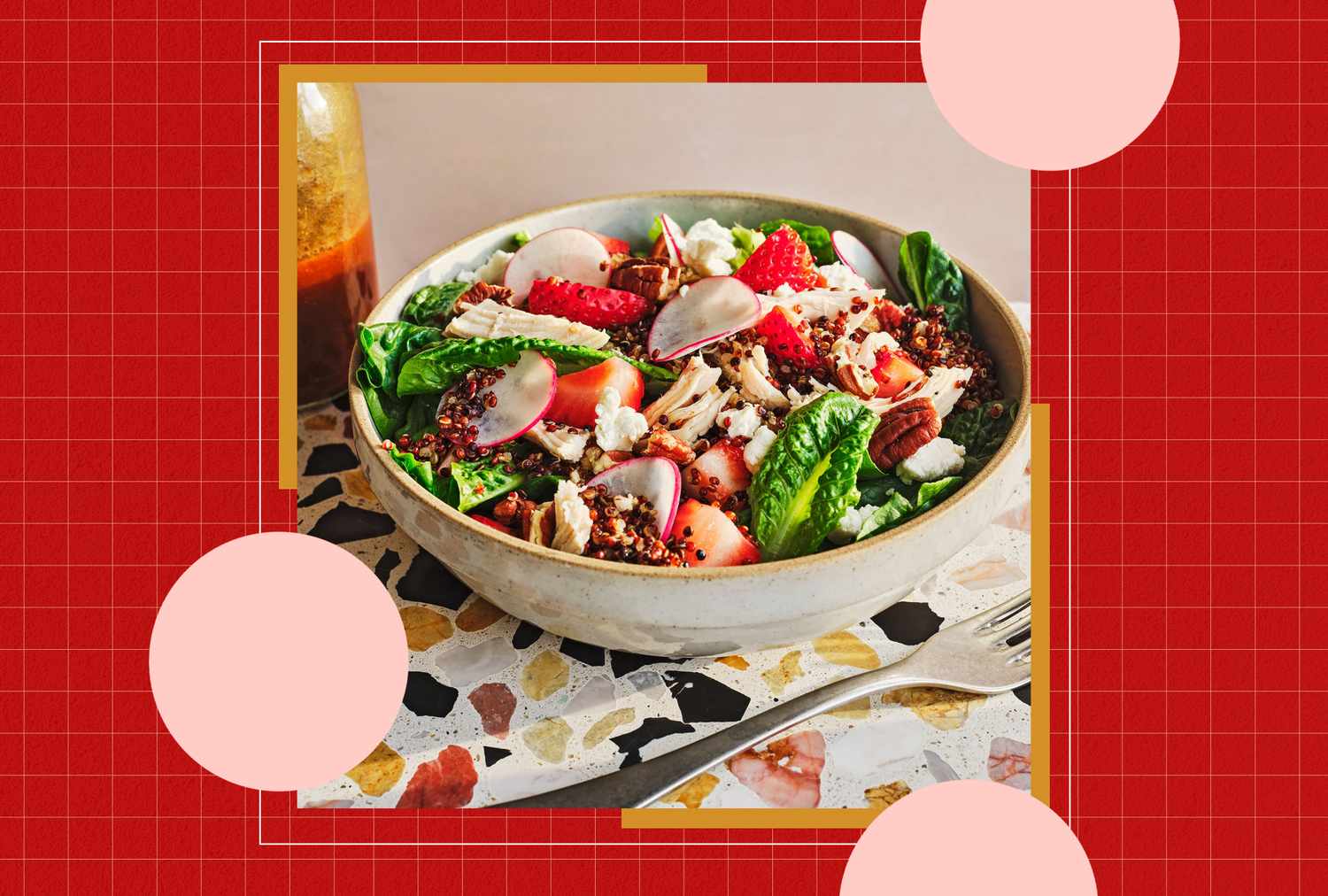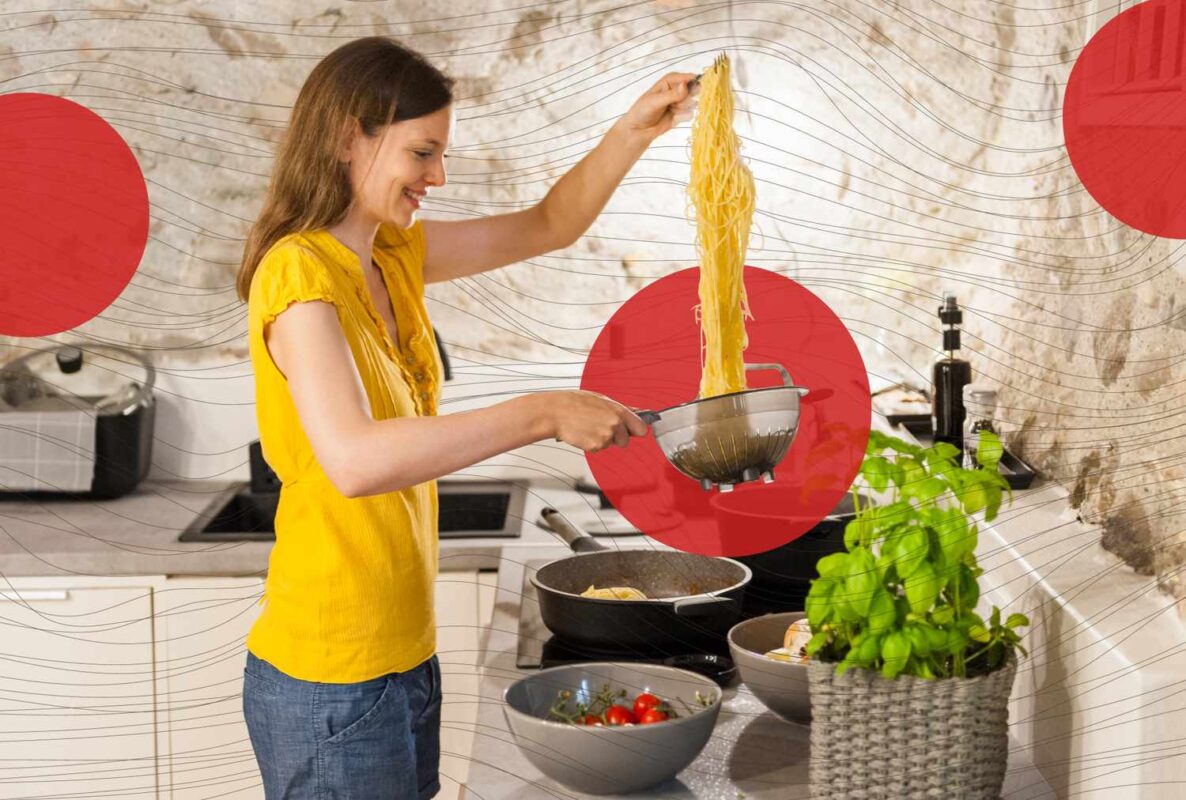Blog
7 Easy Ways to Add More Fiber to Your Lunch

- Most of us don’t get the fiber we need for optimal health.
- It’s easy to assume supplements can help, yet fiber-rich foods provide added benefits.
- RDs say lunch can be an easy opportunity to work more fiber into your day.
Fiber is one of those nutritional powerhouses we all need more of. From supporting digestion to keeping us full and satisfied, a fiber-rich diet offers countless benefits. Yet, few of us get the recommended 25 to 38 grams of fiber we need each day. While you may have heard supplements can help, they can’t compare to the multitude of different types of health-promoting fibers and nutrients you can get from food.
That’s where lunch comes in. With a few simple swaps and additions, your everyday lunch can become a fiber-packed meal. If that sounds good to you, read on for easy, dietitian-approved ways to add fiber to your lunch—no powders or pills required.
1. Replace White Rice with Quinoa
Whether it’s in a burrito or a poke bowl, rice is a lunchtime staple for many of us. But if you typically reach for white rice, there’s a simple upgrade to increase your fiber intake and supercharge your meal, says Lisa Young, Ph.D., RDN. And that’s swapping in quinoa for white rice. By replacing 1 cup of cooked white rice with 1 cup of cooked quinoa, you’ll rack up 5.2 grams of fiber compared to the mere 0.6 grams in white rice., “That’s a boost of nearly 5 grams from one change,” says Young.
Quinoa is not only higher in fiber, it’s also a complete protein. That makes it an excellent choice for vegetarians and meat-eaters alike. Use it as a base for grain bowls, toss it into salads or enjoy it as a side dish with your favorite protein.
2. Add Beans or Lentils
Legumes, like beans and lentils, are some of the most fiber-rich foods you can add to your meals. Plus, they’re loaded with heart-healthy plant protein. “Add beans or lentils to salads, bowls or soups,” says Jamie Lee McIntyre, M.S., RDN. Just ½ cup of canned black beans delivers 8 grams of fiber. That’s nearly 30% of the Daily Value in one tiny serving!
Mix black beans into grain bowls or toss chickpeas into salad to add both fiber and protein. If you’re ordering out, pair a hearty cup of lentil soup with a half a sandwich or a side salad.
3. Use Whole-Grain Bread or Wraps
When it comes to sandwiches or wraps, the bread you choose makes all the difference. McIntyre recommends making the swap to whole-grain bread, which has significantly more fiber than highly refined white bread. For instance, one slice of whole-grain bread contains roughly 3 grams of fiber. That’s five times the 0.6 grams of fiber per slice of white bread., Not only does this swap add more fiber to your lunch, it also provides longer-lasting energy throughout the day.
“As a fiber bonus, choose brands with seeds or flax for extra fiber,” says McIntyre. Specifically, look for bread labeled “100% whole grain” or “sprouted” to get the full benefits.
4. Add a Side of Clementines
Simple additions to your plate can deliver a surprising amount of fiber. Carissa Gaasche, M.S., RD, recommends packing a couple of clementines in your lunch. In return, you’ll score roughly 2.5 grams of fiber plus vitamin C.
In addition to being easy to pack, clementines are quick to peel and refreshing to eat. Their natural sweetness makes them a great complement to a spicy burrito bowl or a savory turkey or chickpea salad sandwich. And if clementines aren’t your thing, an apple or a pear is always an easy way to work in fiber.
5. Toss Berries into Your Salad
Berries aren’t just for breakfast or snacks. They can elevate your lunch, too. Adding a handful of berries to your salad is an easy way to boost flavor and fiber, says Whitney Stuart, M.S., RDN. “Add ½ cup of berries, fresh or frozen, to your salad at lunch,” she says. “Not only do berries add a burst of flavor, but you’ll also get about 4 grams of fiber, depending on the type of berry!”
Strawberries, blueberries, raspberries or blackberries all work well. Toss them into a green salad with goat cheese and nuts for a delicious balance of sweet and savory tastes.
6. Keep the Skins On
“Do less prep!” says Brittany Brown, RD, IBCLC, CDE. “Keep the skins on your favorite veggies and fruits, like potatoes, cucumbers, pears and apples, to maximize the fiber from the foods you already eat.” Next time you slice carrots or cucumbers for a salad or bake a potato, skip the peeling step. It’s an effortless way to bump up your fiber intake without additional effort.
7. Enjoy Chia Seed Pudding for Dessert
Fiber doesn’t just have to come from your main dish. Desserts work, too! If you’re someone who loves a sweet treat after lunch, try chia seed pudding. “This simple dessert adds around 10 grams of fiber, thanks to the chia seeds, and also gives you a boost of omega-3s,” says Juliana Crimi, M.H.Sc., RD. “It’s an easy, no-supplement way to support digestion and stay fuller longer.”
To make it, mix chia seeds with your favorite milk or plant-based milk alternative and sweeten with honey or maple syrup. Then, add toppings like fresh fruit or nuts. It’s a rich, creamy, nutritious way to wrap up your midday meal.
Health Benefits of Fiber
Beyond keeping you satisfied, fiber provides a long list of health benefits, like these:
- Better Blood Sugar Management: Foods high in fiber slow the absorption of carbohydrates from food, leading to potentially more stable blood sugar levels.
- Improved Digestive Health: Fiber promotes regular bowel movements and reduces the risk of constipation. Many fibers also act as prebiotics, feeding healthy gut bacteria, which may support overall wellness.
- A Healthier Heart: High-fiber diets are linked to lower cholesterol and triglyceride levels, which can help reduce the risk of cardiovascular disease.
- Easier Weight Management: Fiber helps you feel fuller longer, reducing the temptation to snack on less-nutritious options.
High-Fiber Recipes to Try
Our Expert Take
Adding more fiber to your day doesn’t need to be complicated, and you don’t need supplements to achieve it. Dietitians say that lunch is a perfect opportunity to work in more of this underconsumed nutrient. To effortlessly increase the fiber in your lunch, try swapping in quinoa for the white rice in a burrito or sushi bowl, add beans and lentils to salads and sandwiches, or choose whole-grain bread instead of white bread. Other simple changes, like tossing berries into your salad, packing a couple of clementines in your lunch, and eating fruits and veggies with their skins on, can also make a big difference. Or, try some chia pudding or fresh fruit for dessert.
Try incorporating one or two tips into your midday meal and see how you feel. Not only will your body thank you for the added fiber, your lunch will become more satisfying and nutritious to boot.












